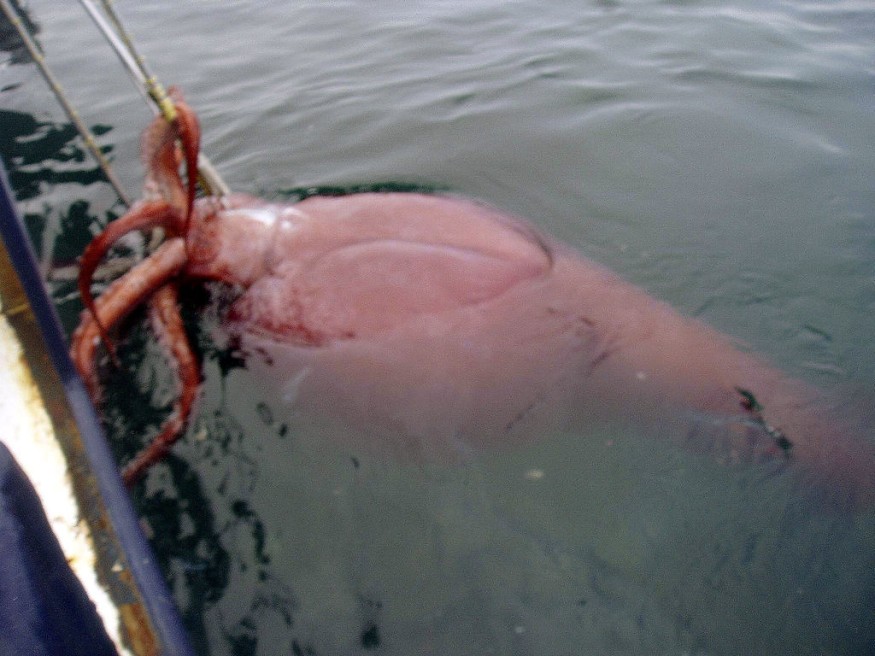A strawberry squid (Histioteuthis heteropsis) was spotted in the Pacific Ocean off the western coast of California. The squid resembles a fruit-colored creature with a mixture of pinkish or red-like colors. Sightings of the giant squids are considered to be uncommon on the California coast.
Strawberry Squid

In a recent YouTube video posted by the Monterey Bay Aquarium Research Institute (MBARI) on March 24, it can be seen the strawberry squid is swimming in the dark ocean or 'twilight zone' in the submarine valley Monterey Canyon, off the Pacific coast of California.
The giant squid's eight arms and two tentacles were captured twisting deep into the ocean abyss. According to Bruce Robinson, a senior scientist at the MBARI, the population of strawberry squids are far from abundant although they can be seen through a deep dive, as cited by Live Science.
Ocean Twilight Zone
The sighting occurred back in February using a remotely operated vehicle (ROV) called Doc Ricketts, equipped with a water-proof ultra-high-definition (UHD) 4k resolution video. The ocean twilight zone area of the Monterey submarine canyon is as deep as the Grand Canyon, as per MBARI.
According to the Woods Hole Oceanographic Institution (WHOI), the ocean twilight zone is a part of the sea with a depth of approximately 650 to 3,300 feet (200 to 1,000 meters) below the ocean surface. It is a layer that stretches across the Earth's waters.
Also called midwater or mesopelagic, the area is characterized by its dark surrounding and cold temperature, wherein its ocean surface is beyond the reach of sunlight, as per WHOI.
Furthermore, the ocean twilight zone houses some of the planet's weird-looking marine animal species, including microscopic organisms.
This is due to the fact that most animals at this depth have spent the rest of their life in such an environment-deprived of light compared to the upper layers of the ocean.
As a result, evolutionary changes are quite different for marine creatures in the twilight zone.
Giant Squid
Giant squids (Architethus dux) have remained a mystery to scientists for centuries. They are the largest invertebrate on the planet which can reach up to dozens of feet in length and weigh nearly a ton. Their normal size is comparable to a bus.
Dubbed as the Kraken or the Leviathan, an alleged ancestor of the carnivorous giant squids has been one of the subjects of myths and modern pop culture.
Based on the legend, fishermen or voyagers purportedly often claim of encountering squid-like giant sea creatures that can pull ships beneath the oceans, as per NPR, an American non-profit media organization both held as a private and public entity.
From this rationale, scientists have explained that the sightings of the legendary sea creatures were likely the same as the contemporary giant squids that we know of today-which are mostly hard to study due to their deep marine habitat.
In modern history, some sightings of the twilight zone-dwelling creatures took place after dead giant squids are washed ashore. In 2004, scientists from Japan took their first images of a live giant squid, confirming their existence but not to the extent similar to the Kraken.
Related Article: Giant Squid Devoured by Shark While Eating Last Dinner, Fossils Show
© 2025 NatureWorldNews.com All rights reserved. Do not reproduce without permission.





